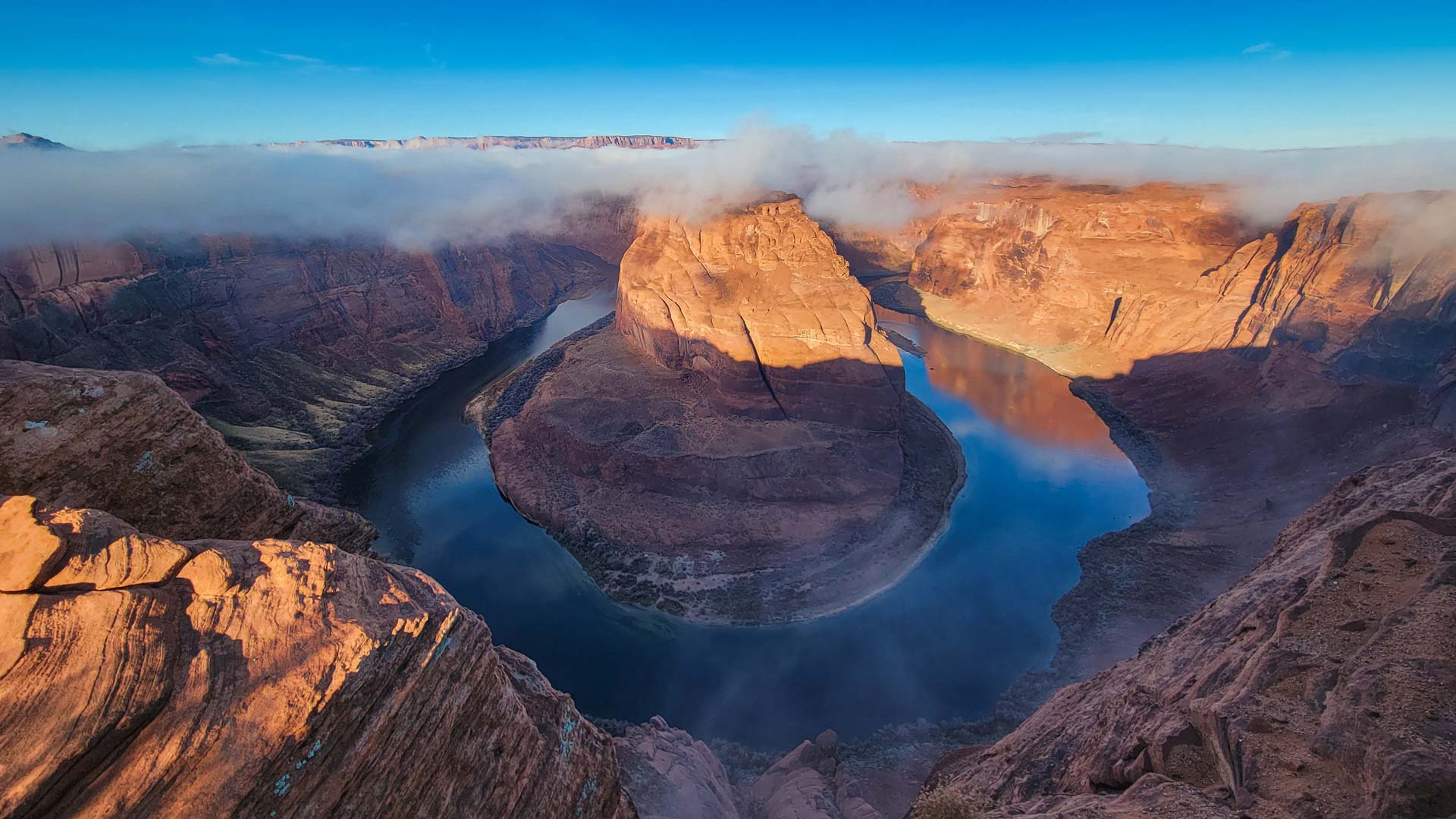 Horseshoe Bend, five miles downstream from the Glen Canyon Dam and Lake Powell, is a popular viewing spot for the Colorado River.
Horseshoe Bend, five miles downstream from the Glen Canyon Dam and Lake Powell, is a popular viewing spot for the Colorado River.
A new report by the UCLA Institute of Environment and Sustainability and Natural Resources Defense Council found that wastewater recycling could mitigate demand on the Colorado River.
Noah Garrison, environmental science practicum director at the UCLA Institute, is an author of the study. He said that the West is facing a two and four-million-acre-feet-per-year shortage on the River for water that is divided up among the seven Colorado River Basin states.
“We’re going to have to develop new resources and new sources of water supply in order to make up that shortage,” Garrison said.
The study aimed to figure out ways to offset that shortage to ensure a water supply.
“As it turns out, we know very little about how much wastewater we’re currently recycling and reusing across those states and so our study went to sort of figure out how much water are we currently treating, how much is being reused and what’s the opportunity to increase the amount of water supply that’s available,” Garrison said.
The study identified Nevada as the leader in treated wastewater recycling about 85%, which mostly comes from Las Vegas and subsequently discharged back into Lake Mead.
In second place is Arizona, which recycles about 52% of its treated wastewater.
“Cities like Phoenix and Tucson are national leaders in wastewater recycling and creating new water supply in an area that’s under tremendous water stress,” Garrison said.
California recycles about 22%, followed by New Mexico at 18%, Colorado at 2.6%, Wyoming at 3.3%, and Utah, less than 1%, according to the study.
The report identified that the overall average of wastewater recycling across the seven basin states was about 26%.
“Our report shows that if the Colorado River Basin states that aren’t already recycling 30 or 40% of their wastewater, if the five states that aren’t currently meeting that threshold, increase their wastewater recycling to just 40%, it would create some 860,000 acre feet per year in water supply across the states,” Garrison said. “If they increase to 50%, which Arizona and Nevada are already doing, it would create some 1.3 million acre-feet per year, which is already something on the order of 30-35% of the shortfall on the Colorado River.”
About 40 million people rely on the river’s overall water supply, which is why researchers like Garrison believe that states should pursue water recycling more aggressively as the future gets hotter and drier due to climate change.
“This isn’t something that’s driven by the federal government or by the states themselves; it’s really happening in local jurisdictions and cities and treatment plants,” Garrison said.
He hopes that there will be an increased involvement by the federal government in developing standardized and mandatory reporting systems for wastewater treatment plants to know how much water is available for recycling.

By submitting your comments, you hereby give AZPM the right to post your comments and potentially use them in any other form of media operated by this institution.